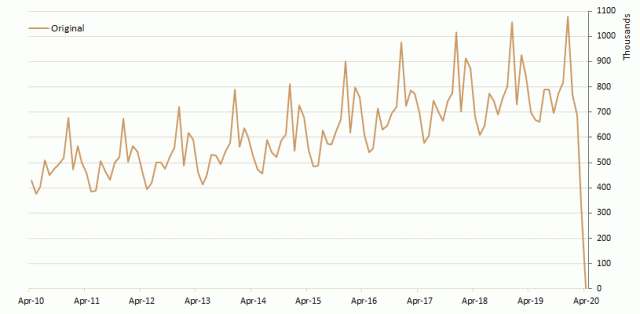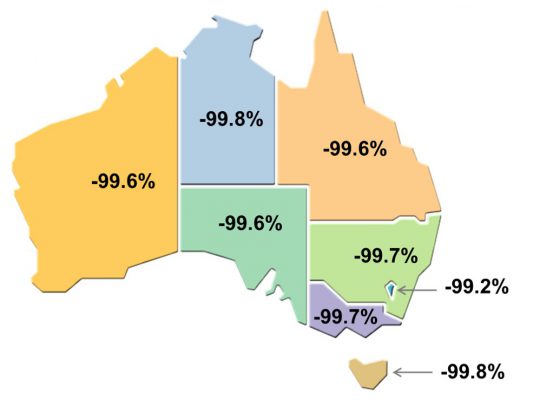Last week, the ABS unsentimentally released this month’s Overseas arrivals and departures figures, revealing the full extent of one of the most significant demographic events to hit Australia in a generation: a 99.7% drop in overseas arrivals, compared to the same period last year.
And while this was entirely expected, Glenn takes a moment to mark what a truly significant moment this is, explaining the implications our border closures will have for the demographic profile of Australia in the years to come.
Due to the COVID-19 pandemic, Australia closed its borders in late March. No overseas tourists were allowed into the country, and other visitors only in exceptional circumstances. Residents were urged to come home and forced to quarantine in hotels for 14 days to contain the potential spread of the coronavirus. And all overseas travel was banned for Australian residents, again, apart from exceptional circumstances. This continues at the time of writing.
The ABS continues to publish its monthly 3401.0 – Overseas Arrivals and Departures collection, dutifully reporting on the precipitous drop in overseas arrivals (they have ceased publishing the trend and seasonally adjusted estimates now, as these are pretty meaningless).
The April 2020 figures were released on June 12th, and show a 99.7% drop in overseas arrivals from the same period last year. The approximately 700,000 short-term visitor arrivals in April 2019 has dwindled to just 2,250 in April 2020. And this happened in the course of just two months. Arrivals in February 2020 were still 685,000.
This is what happens to the statistics when you close the borders!
This is the chart showing arrivals dwindling to almost zero. You can see the clear seasonal peak every year around December, and then the huge drop over March-April 2020.
Australia – Short-term visitor arrivals – Original estimates

And this is my favourite, if now rather pointless map, showing how the change in overseas arrivals impacted the states and territories differently (it really didn’t!)

The ACT is actually a little less – perhaps the drop of “only” 99.2% in the ACT represents arrivals of diplomats, who may be exempt from the bans.
Where are our overseas arrivals currently coming from?
The table of top 10 source countries shows we’re being swamped by New Zealanders, who made up 16% of all the arrivals in April – a whopping 370 people.
Residents returning is now the major source of people coming into Australia, and even that declined from 538,3600 in March to 17,050 in April (a drop of “only” 98.1% in a year). The news has been full of discussion about the quarantining of returning residents, but there are no longer even very many of those. In absolute terms though, there were 6 times as many as overseas visitors though.
What does it mean for the future population of Australia?
This is all interesting, and not unexpected, with the borders closed. The big effect on our future population though comes from long-term and permanent settler arrivals. These have also almost stopped.
Permanent and long-term arrivals into Australia in April 2020 numbered just 1,870 people, down from about 58,000 in April 2019. Depending on how long this continues, it will have a major effect on our future population – since around 60% of Australia’s population growth in recent years has been due to overseas migration.
If the borders remain closed for a year or more, this will substantially reduce population growth. It might bounce back afterwards, or not. Our nationwide population forecast for 2031 has been reduced by 900,000 people due to this impact. Our forecasters are monitoring this situation and looking at the impact on your local area as well. Keep an eye out for a new interactive whitepaper in the coming days, that will share these forecasts, along with tips from all our teams to understand the impact of Covid-19 on your local area











